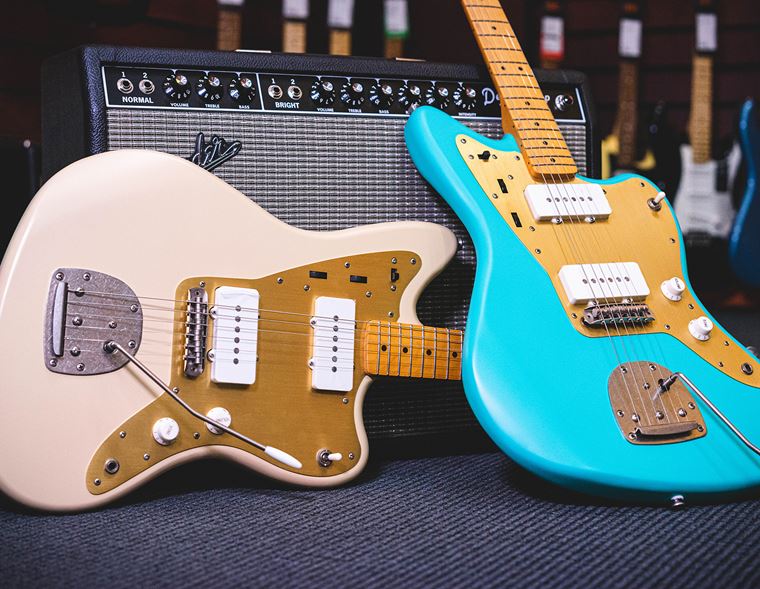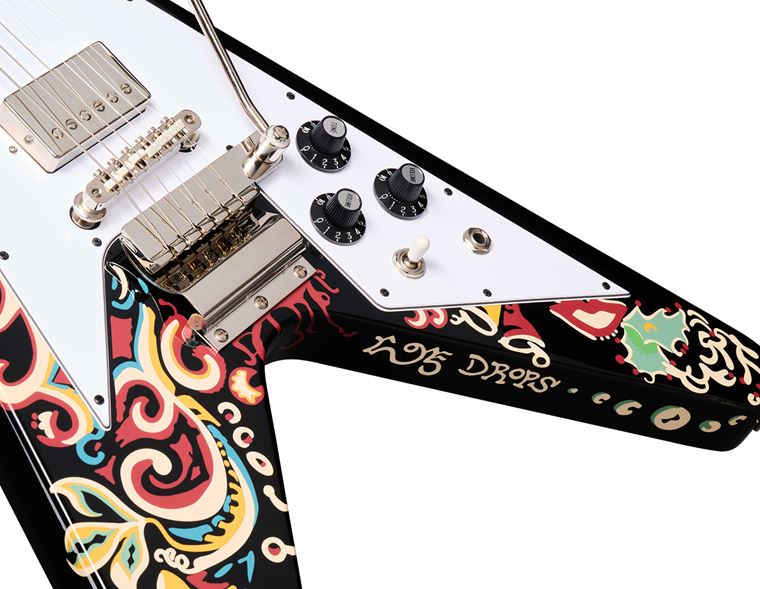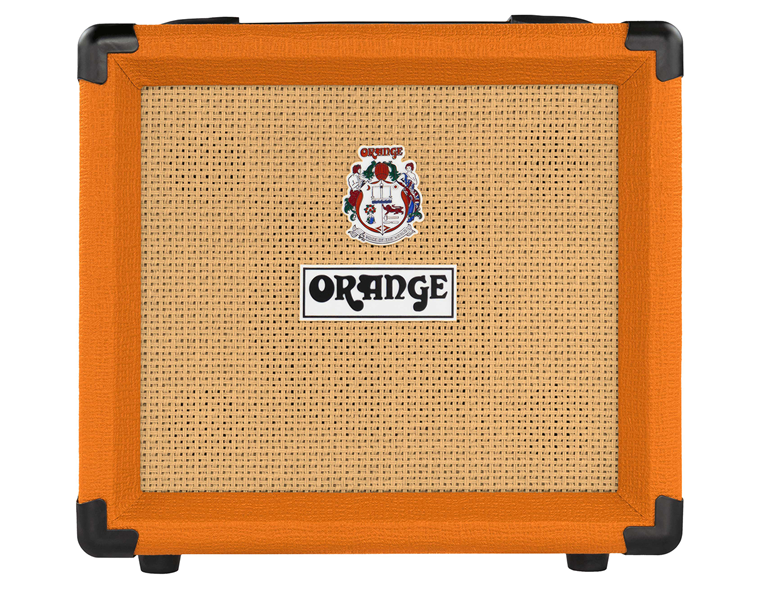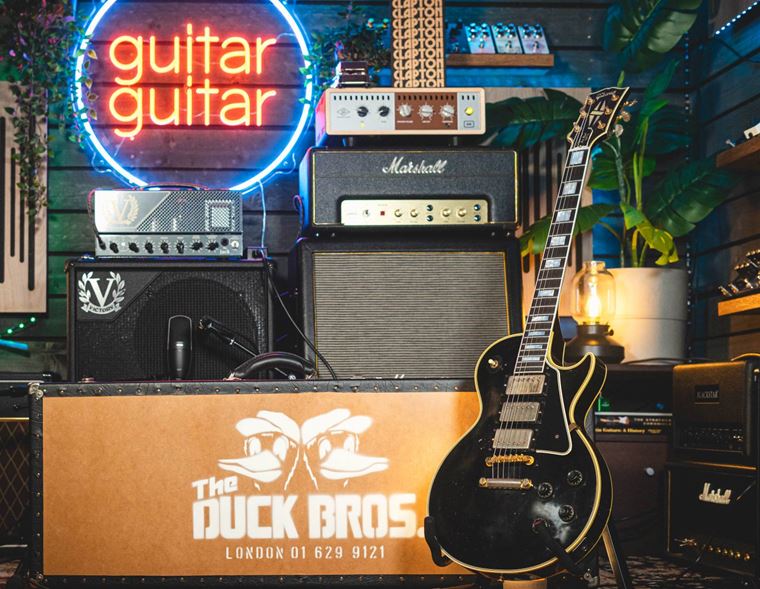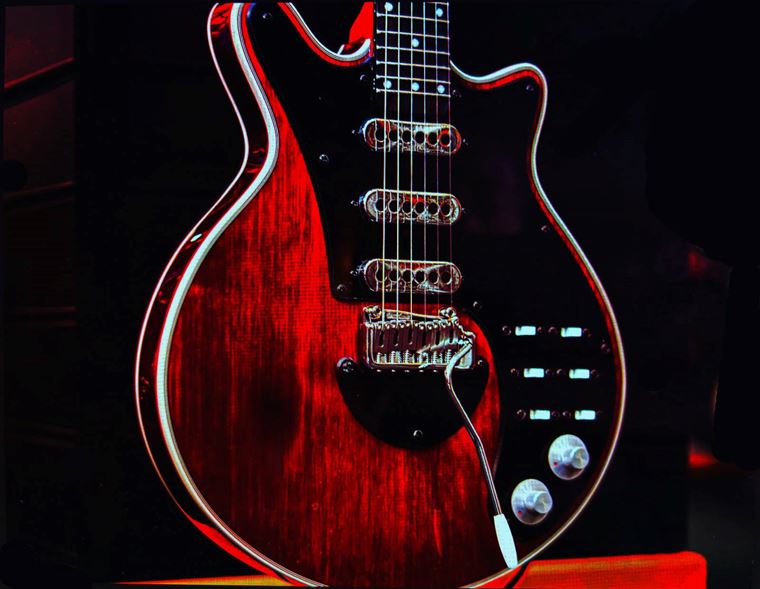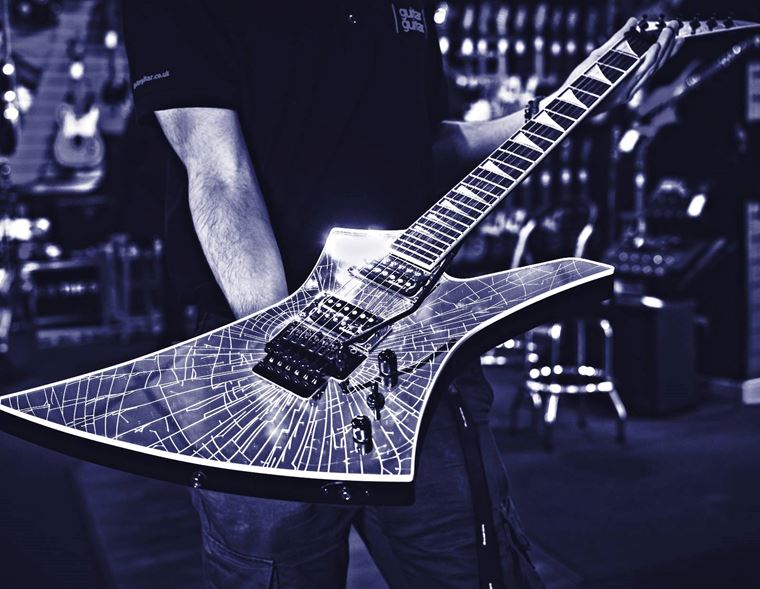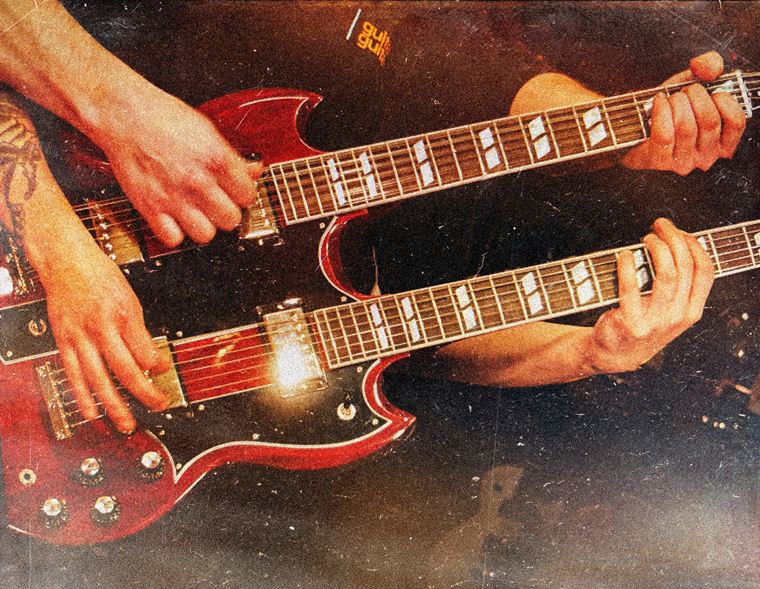Charvel: The Rise, Fall and Rise of a Hard Rock Icon
Published on 17 May 2023
Where would 80s guitar culture be without Wayne Charvel and Grover Jackson? Come back with us to a time when guitars ruled the earth, or at least California; a time when the faster you played, the better you clearly were! Loud, bold and impossible to ignore, the hard rock of the 80s put down a blueprint for successful excess, in a way that the world has been keen to remember since.
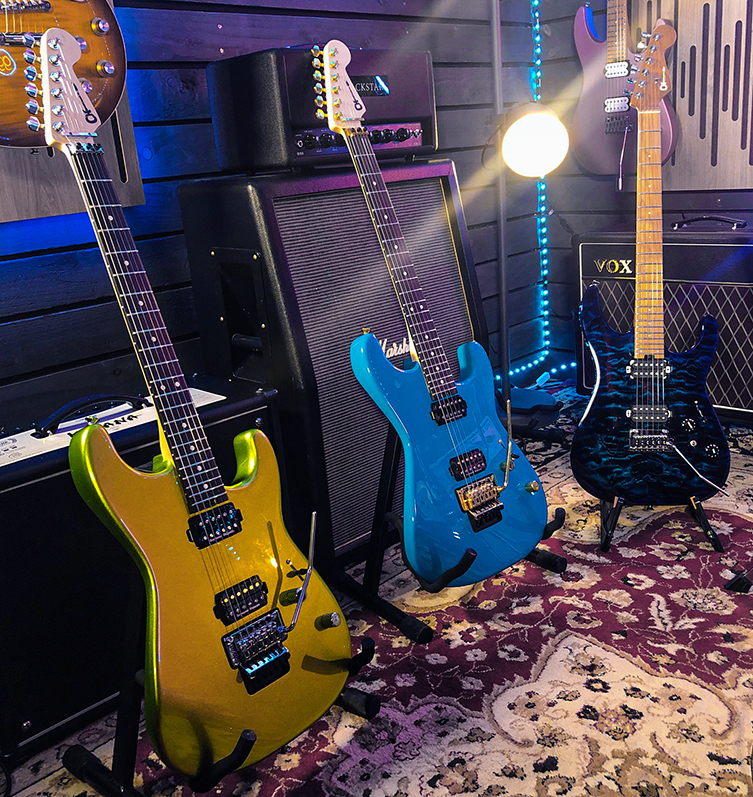
The decade that saw the magnificently peacocking hair metal bands of Sunset Strip dominate the world would’ve been a very different place without two quietly influential, enigmatic people. Clearly, we don’t mean David Lee Roth! No, without Wayne and Grover, it’s fair to say that we’d never have enjoyed the following things:
- Charvel Guitars
- Jackson Guitars
- EVH
- Hair Metal
- Custom Shops
- Graphic Finishes
- Gunslingin’ Superstrats
- DIY Modding Culture
There’s more we could add to that list, but it’s obvious to see that one of the most celebrated periods in the history of the electric guitar would’ve been vastly different - and less fun, frankly - without the somewhat twisty history of these two individuals. Today, we’ll briefly outline the story, without getting too stuck in the minutiae, and check out some of the current glory that Charvel are enjoying as a brand.
Glendale, Late 70s
Let us begin our tale in sunny California. Glendale, in fact, and we’ll settle down around the late 1970s. When not repairing and refinishing Fender guitars, Wayne Charvel was busying himself with distributing guitar hardware and parts, catering to a market that was only just beginning to form around the notion of customisation. Players were more and more open to the idea of upgrading the hardware on their instruments, as well as considering custom finishes and graphics. Wayne was their go-to man, and his business moved from Glendale to nearby Covina, a city located east of Pasadena and a little west of San Dimas. Yes indeed, Charvel guitars were never truly from San Dimas: it was merely where their company P.O. Box was set up!

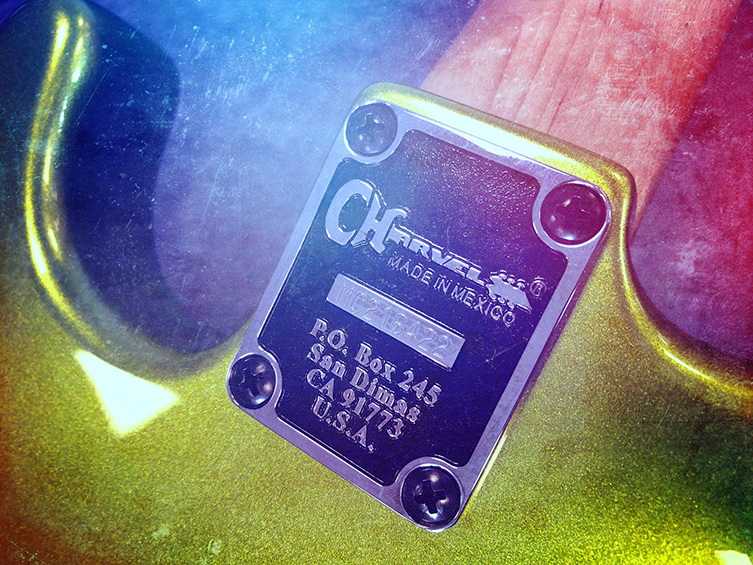

Business was good: local players helped create a small buzz around Charvel’s services, and at the behest of employee Grover Jackson (who was himself a luthier), Charvel started putting together entire instruments to sell. This was also partly motivated by far-eastern companies who were buying his parts, building full instruments and then selling them at a discount, thereby proving that a market existed as well as providing instant competition.
This was pretty much the birth of the superstrat, a general guitar idea/concept that took over the 80s. S-type bodies paired with slim necks, hot pickups and - when it became available - locking Floyd Rose tremolos created a fashion that has never gone away.
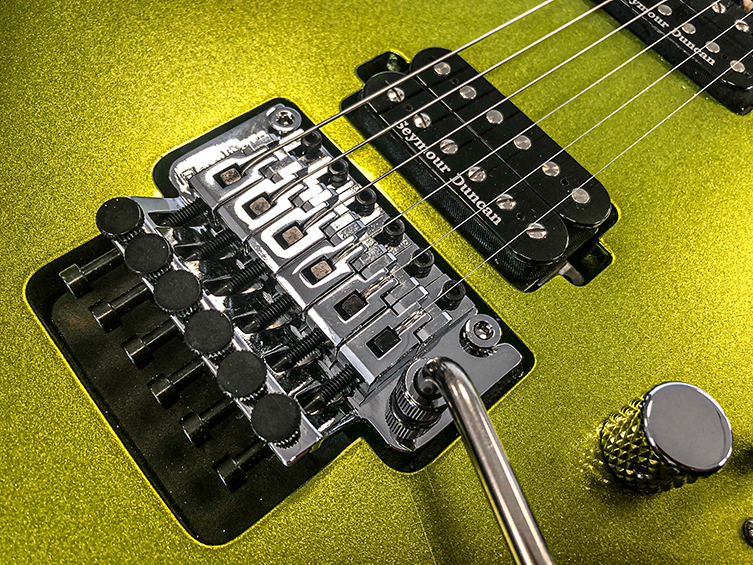
Although things may have looked good from the outside, financial troubles were brewing and Wayne Charvel eventually had to sell his business to Grover Jackson, who took over production of Charvel guitars in late 1978. Whilst at Charvel, Jackson collaborated with Ozzy Osbourne guitarist Randy Rhoads to create what we all know now as the RR. Because it was such a radical departure from the hot-rodded Strat-types the brand were known for, he opted to release the guitar under his own name instead, thus giving birth to Jackson guitars.
Charvel guitar continued being built in California until 1986 when production moved to Canada. Grover sold the company in 1989, but we’re getting ahead of ourselves a little. Let us backtrack and look at some details from the brand’s heyday first…
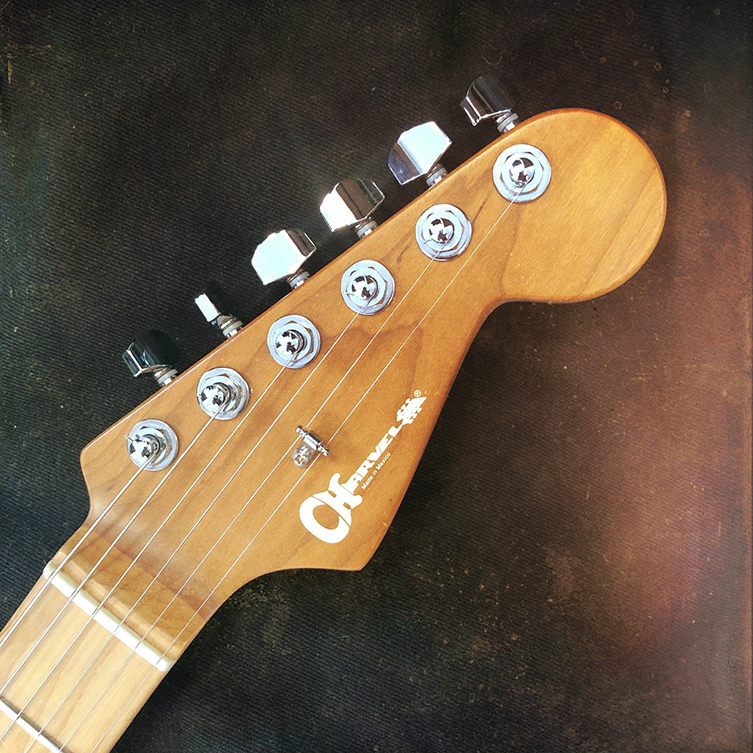
Ed and Steve
Two guitar legends are closely associated with Charvel, though in actuality, both connections are somewhat tenuous. We are, of course, talking about Eddie Van Halen and Steve Vai. In the early 80s, Ed was probably the most popular and revered rock guitarist on the planet, with an influence so broad and intense that it’s hard to quantify today. Everybody wanted a slice of what Eddie had, and that of course included guitar manufacturers.
Whilst it was to Kramer that he formed an allegiance during the mid 80s, Eddie was famed at least as much for his initial ‘Frankenstein’ guitar, which he’d put together himself from parts he’d sourced from none other than Boogie Bodies. As we know, Boogie Bodies was a company distributed by Wayne Charvel.
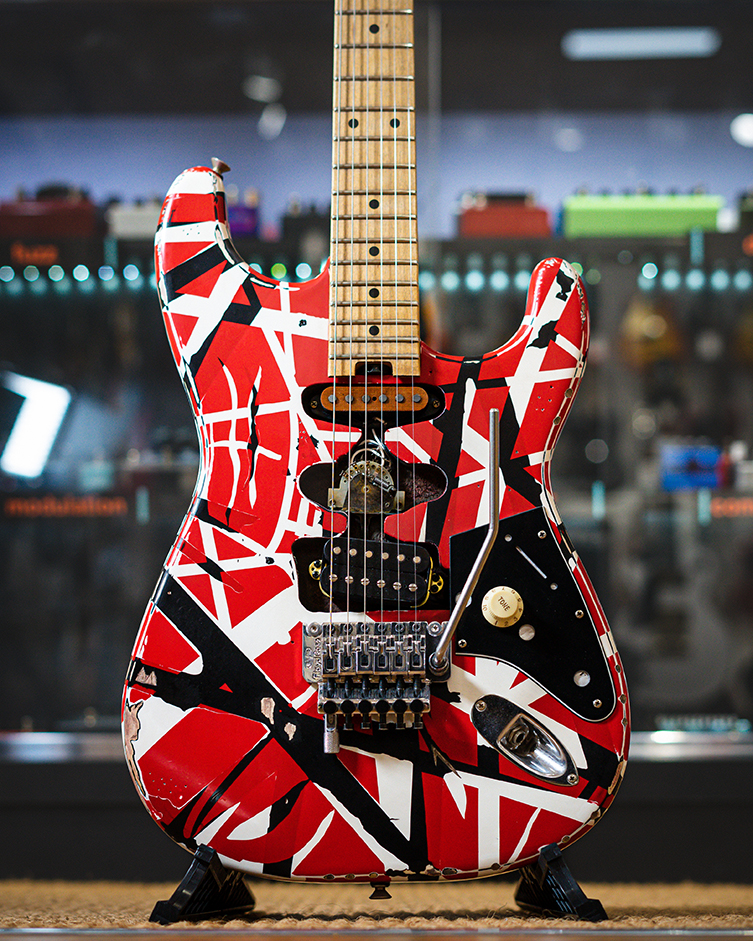
More significantly perhaps, Ed used to frequent Wayne’s business for repairs and parts, and actually commissioned him to build the iconic ‘Bumblebee’ guitar that fans know and love from the VHII album era. Whilst it didn’t have Charvel’s name on the headstock, it was widely recognised to be a Charvel creation, and this more than anything else secured the brand’s reputation throughout the gunslinging years.
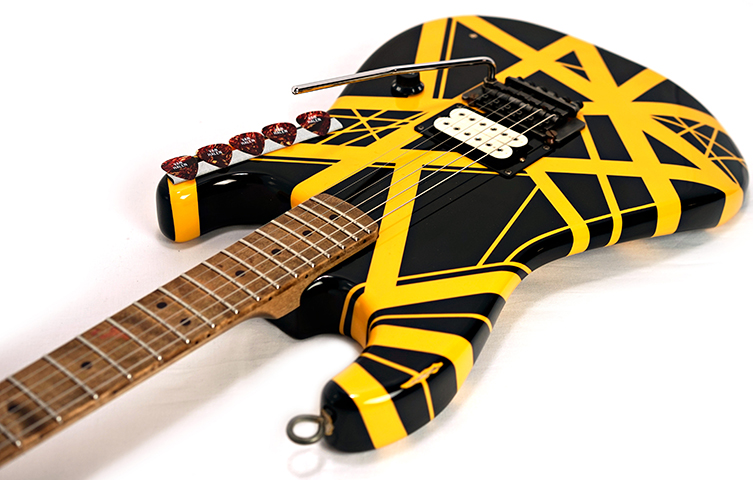
As for Steve Vai, the connection is just as personal. Before the days of his Ibanez Jem series, Steve was most famous for using a guitar nicknamed the ‘Green Meanie’. This Superstrat was originally loaned to Steve by Grover Jackson when Steve played in Alcatrazz, and it was originally Sunburst! Displaying a flamboyant streak that if anything only increased as the years passed, Vai had the guitar sprayed in a very particular shade of green, and began modifying it in ways that became progressively more Jem-like.
Here’s what Steve has to say:
“If I had to point to one guitar that is more valuable than EVO (his favourite JEM), it would be the Green Meanie. It was my go to guitar through all the Alcatrazz, Dave Roth and Passion & Warfare days. It’s the first guitar that I chiselled away at the body to create the wide floating that the whammy bar is capable of.”
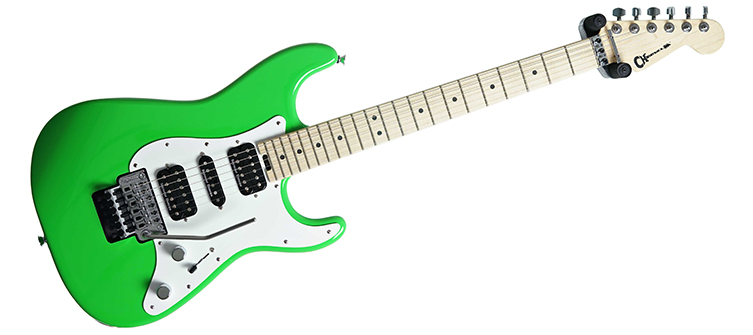
The Hair Metal Glory Days
When we think of Charvel, we also think of spandex, hairspray, Sunset Strip, and a fun-loving vibe that embraced playfulness and optimism. The bands all had dreamy frontmen, they all apparently hung out down dark alleyways in Hollywood (judging by most promo shots of the time) and their guitar players had to have a Superstrat with a custom graphic finish. At the very least, the guitar had to be bright and loud!
Charvel had won over the lion’s share of hair metal guitarists, with people like Warren DeMartini (Ratt, see above), Jake E Lee (Ozzy Osbourne), Eddie Ojeda (Twisted Sister) and George Lynch (Dokken) in addition to Eddie Van Halen and Steve Vai. That’s quite a list! Kramer eventually got Ed, and Ibanez won over Vai & Joe Satriani, but for a while, Charvel were untouchable.
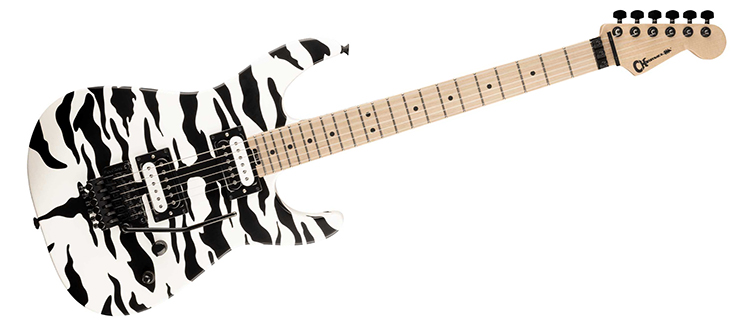
The Charvel Renaissance
As the 80s became the 90s, rock music changed. Almost overnight, the hair metal dandies of the sunset strip were thrown out of favour by Kurt Cobain and the grunge movement. This spelled doom for ‘performance’ brands like Charvel, whose instruments were too wild for traditionalists but too conservative for the full-on metallers like Metallica and Sepultura.
Charvel disappeared for a while, until the brand was bought and resurrected by Fender in 2002. Understanding that players wanted instruments that harked back (very strongly) to those 80s glory days and not some sort of new millennial take on the brand, Fender permitted Charvel to use their Stratocaster headstocks on the new range, called Pro-Mod.
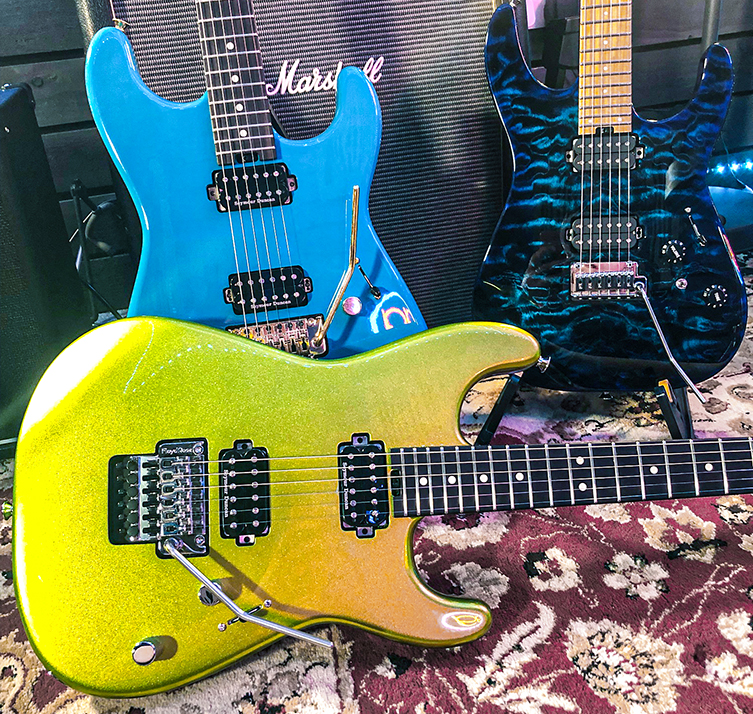
Initial releases were built in Japan and featured a distillation of what once made the brand great: superstrat instruments with locking Floyd Rose trems, high output Seymour Duncan and DiMarzios pickups, and a thin fast neck with big frets for endless soloing. Oh, and bright metallic finishes, of course.
Production then moved to Ensenada, Mexico. This keeps Charvel’s output in line with Fender’s own fabrications, with a level of quality control that has remained high. Today’s gunslinger is spoiled for choice with Charvel’s offerings, all of which retain that 80s heyday DNA in their makings.
Today: DK Models and Artist Signatures
Charvel are well and truly back, and more relevant than ever. Today, there isn’t so much an overriding ‘fashion’ that dominates the guitar world as much as there are subcultures upon subcultures. Many of these require performance instruments, and there’s a huge demand for such a guitar that foregoes the more extreme spikes and contours of the more overtly metal offering out there.
That said, plenty of metal musicians are choosing Charvel. Gojira’s Joe Duplantier is such a player, whose signature guitar owes a lot to the Telecaster, but is still Charvel through and through.
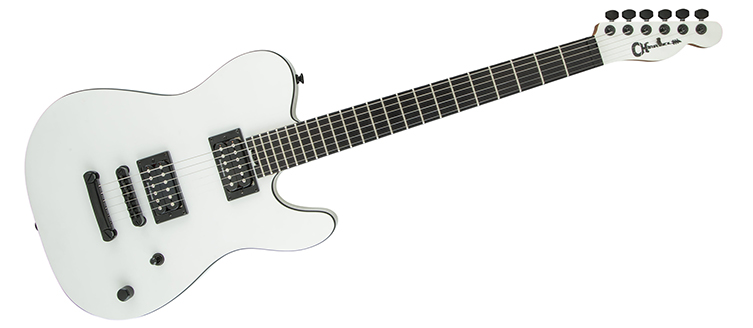
Slipknot’s Jim Root has even gone as far as to move sideways from Fender to Charvel, after more than a decade of successful collabs with Fender. It’s a move that makes a lot of sense, given Charvel’s reputation for high performance instruments.

The Pro-Mod range has a few sub-ranges within its cache: there are the various San Dimas and SoCal guitars, which retain the classic Fender outlines but add the extra firepower, and there are the DK models which introduce a slightly revised (sleeker and slightly sharper) body shape as well as a less overtly ‘shred’ take on the hardware. Brand pickups remain (most often Seymour Duncan selections) as does a tremolo, but a Gotoh 510 trem is used in place of the locking Floyd Rose. The Gotoh tremolo sits somewhere between a standard Strat ‘vintage’ trem and a Floyd in the sense that it does not lock but does have a wider travel than a vintage trem. These won’t ‘go slack’ like locking units, but for everything else, you may find that the Gotoh is more than able to cater to your needs!
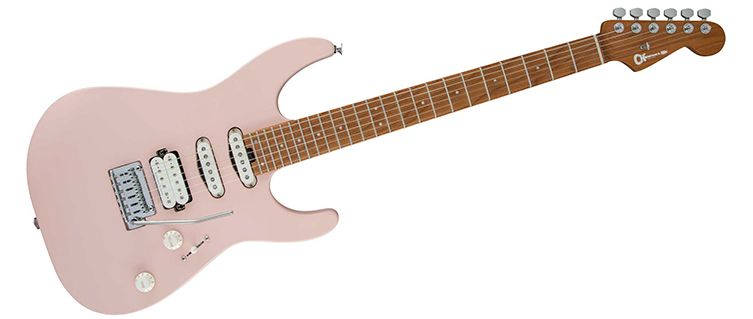
There’s more than a slight resemblance here to boutique upmarket instruments like Suhrs and so on with these Charvel DK models! Whilst it’s quite unfair to compare the two (the cost difference runs to the thousands), the current Charvel models most certainly punch above their weight. World-class hardware on well built instruments with style and panache, from one of the most iconic brands of the 80s? We’ll say yes!
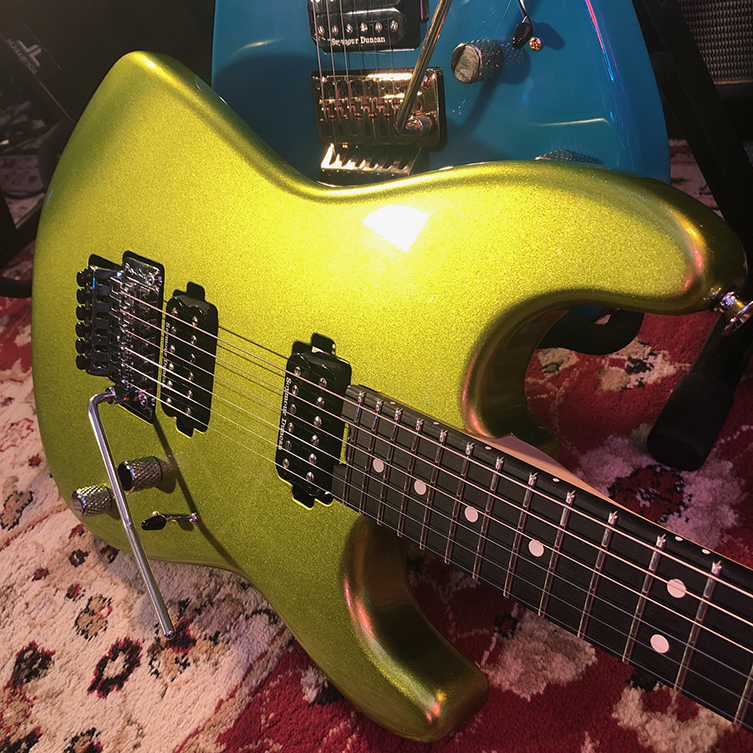
And what of the men themselves? Well, both have enjoyed quite some longevity in the industry, with Wayne and Grover both offering several variations of their own custom models over the years. We’ve seen Wayne guitars, GJ2 guitars and also instruments made by Grover Jackson for Friedman amongst others. Things seem to be relatively quiet for them both at the moment, but we get a feeling it won’t be too long before we’re hearing more from these quiet pioneers! Until then, their legacies live on in various ways, not least in the current stable of awesome Charvel guitars.
Click to View our Selection of Charvel Guitars




